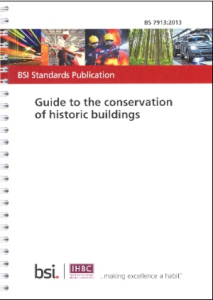Conservation work on 20th century wall paintings at the Church of St Martin of Tours (Bilborough, Nottinghamshire) has been awarded the 2015 SPAB John Betjeman award, with St Mary in Nantwich being awarded a commendation.
The Society for the Protection of Ancient Buildings (SPAB) writes:
Sensitive conservation work to two remarkable recently rediscovered 20th-century wall paintings at the Church of St Martin of Tours at Bilborough in Nottinghamshire have won the prestigious 2015 SPAB (Society for the Protection of Ancient Buildings) John Betjeman Award. The murals are the work of war artist Evelyn Gibbs (1905 -1991). The SPAB has also announced a commendation for repairs to the medieval choir stalls at St Mary, Nantwich.
The Society’s annual award honours the memory of church enthusiast and SPAB member Sir John Betjeman and is made for outstanding repairs to the fabric of places of worship in England and Wales completed in the last 18 months. Importantly, the award is always made to the winning building rather than to individuals.
Five shortlisted projects were visited by the SPAB judging panel in May and they were unanimous that the 2015 award should go to the recovery of the Gibbs wall paintings in the sanctuary at St Martin of Tours, hidden for 42 years. Although the church is largely medieval, today it is at the centre of modern housing estate and area of need. The wider significance of the project is that it has provided a much needed focus for education, community and aspiration.
Completed in 1946, the paintings depict the Annunciation and are positioned either side of the east window in the chancel, Mary to the left and Gabriel to the right. They are broadly in the tradition of 14th -century Italian murals, with the figures charmingly situated in the old village setting of Bilborough itself. The paintings were ‘lost’ during the construction of an extension in the 1970s.
Although their possible survival (beneath layers of emulsion) was identified in 1990s, no work was undertaken until they were rediscovered in 2009 by workmen re-wiring the church. A condition survey was carried out by specialist conservators Tobit Curteis Associates in 2010 which recommended a sensitive approach to the recovery of these important paintings – thought to be last surviving examples of monumental work carried out by Evelyn Gibbs.
The project was not straightforward, requiring the removal of a 1970s ceiling in the chancel.
Work on the paintings began in September 2014. The conservation team, Tobit Curteis, Bianca Madden and Claudia Fiochetti carried out initial cleaning and repairs, particularly to areas of the Mary mural where the original painting had sustained water damage. In addition, Gabriel had been marked by graffiti. Conservators Saskia and Joy Huning were also on site during the early weeks of the project to carry out colour matching and make full size templates of the original paintings.
While the team was able to recover the upper parts of the mural, lower sections had been damaged by the emulsion. The survival of the upper portions and an accurate photographic record – thanks to the involvement of Gibbs’ biographer Pauline Lucas – provided invaluable information for the successful re-painting of the damaged sections. The Hunings returned to the site in October once the conservation of the upper parts of the mural was completed. They worked particularly hard to blend the two new sections and to achieve Gibbs’ technique of applying paint, which was heavily influenced by her early etchings.
The work was completed on 31 October and on 11 November – the feast of St Martin – the church re-opened with an Armistice and thanksgiving service.
Hilary Wheat, St Martin of Tours project co-ordinator says: ‘The project was kick-started when an anonymous donation of £1000 in cash dropped through the letter box at the vicarage. We couldn’t believe it. We’re a small church in Bilborough in Nottingham, part of a deprived community. Areas get a reputation for hardship but it’s really nice to have some good news. Which is the theme of the painting really! The recovery of these remarkable paintings is an investment in the community, fulfilling their original purpose to bring beauty and hope to a time of austerity.’
SPAB judging panel spokesman Roger Mears says: ‘We were impressed not only by the quality of the conservation and artistic work carried out, but also by the careful assessment, testing and decision-making process which had informed the project. The judges discussed the approach taken to the damaged lower sections of the paintings and were satisfied that this had been justified both by the conservator and the artist. They were particularly impressed by how the complex aesthetic, technical and philosophical challenges had been approached and overcome; and by the commitment to community involvement and education embedded in the project. This has resulted in a space of beauty and serenity, but has also, very clearly, been a catalyst for wider benefits.’
SPAB’s John Betjeman Award takes the form of a commemorative scroll featuring a John Piper print of a church much-loved by Betjeman. This will be presented at the Society’s annual members’ meeting in July.
In Art in Living Form John Betjeman wrote: ‘There are something like twenty thousand Church of England places of worship in this country and of those far more than half are ancient buildings, that is to say each represents the gradual growth of a community. They are the history of English art displayed in living form, and most country churches have far more to tell to those who will look than have the local museums.’
View the press release
IHBC ‘Awards etc’ listing


